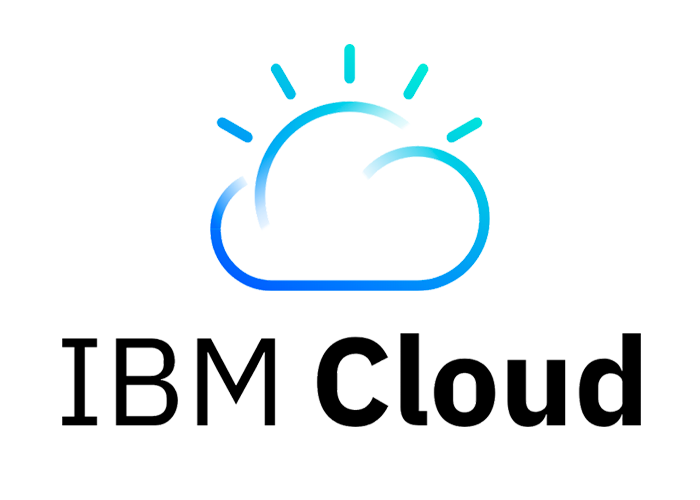We’ve often looked at the offerings of different cloud vendors here on TechGenix and why organizations choose one over the others. For example, Twain Tayler recently talked about why some organizations have been choosing Google Cloud over its rival competitors while Benjamin Roussey explained why AWS keeps growing despite its higher complexity and costs compared with other major cloud providers. And Rahul Sharma offered some predictions earlier this year concerning the three giants of cloud computing (AWS, Google, and Microsoft) and how they’re expected to perform.
I thought, however, that it might be worthwhile to try and get a broader perspective on the current state of cloud computing from an industry insider, so I recently approached Sash Sunkara, co-founder and CEO of RackWare, a company that helps enterprises migrate to the cloud, protect their workloads through backup and disaster recovery, and manage multiple cloud environments on a single pane of glass. Here are her views on where the battle for cloud supremacy stands now and what we can expect in 2019.

MITCH: Thanks, Sash, for taking some time out of your busy schedule to help our readers learn more about what’s happening in the battle for cloud supremacy and where things may be headed in the future. Let me start off by asking how the state of the cloud market has shifted in 2018. Have there been any developments in the last few months?
SASH: I’ve seen two major developments in the cloud market in 2018. First, many of the smaller cloud players have fallen away. VMware has closed its doors, as has CenturyLink. As the smaller providers have disappeared, competition among the major providers — Amazon, Microsoft, Google, IBM, Oracle, Alibaba — has heated up.
Second, Oracle is making a significant push into the cloud. They were late to the market, but if you look at the last 12 months, and especially the last two months, Oracle has made a huge push into the cloud marketplace. The company has always had a traditionally strong presence within the enterprise community, and their new business plan matches their technical capabilities.
MITCH: Do you see any of the major cloud leaders (Amazon Web Services, Microsoft Azure, Google Cloud Platform) as having fallen behind in any way?
SASH: Amazon has never fully owned the entire enterprise market, but they’ve always had a foothold. There’s always a user segment, usually developer organizations, which are committed to using Amazon’s technology. But the frustration for many enterprises is how to bring Amazon loyalists under the enterprise’s IT umbrella, to provide them with compliance and governance and to manage AWS in terms of cost and security.
The advantage for Azure is that Microsoft has been in the enterprise for years. The challenge now is how to leverage the ubiquity of IT tools like Windows and Office 365 into a larger pool of cloud customers.
As far as Google is concerned, consumers are big fans, and small businesses can’t get enough of it. But I’ve yet to see a larger footprint in the enterprise market. Even with that said, you can never count Google out. I’m looking forward to seeing how they will try to make a play for the enterprise market.
MITCH: OK let’s move on and look at some of the bigger-name underdogs in the cloud market. What’s happening with IBM lately in this area?

SASH: I see IBM continuing to decline in the cloud market. The enterprise was theirs for the taking. But if they don’t start employing a new strategy, it’s just going to be a story of continuously declining revenue and customer base moving into 2019.
There are a few other small players (RackSpace, Fujitsu, and Dimension Data come to mind) that are making plays for the cloud market. But these smaller players don’t meet enterprise requirements, and they’re limited to smaller geographic areas. There’s a lot of distance between the top five players and everyone else.
MITCH: What about Oracle? I’ve heard reports that Oracle is no longer regarded by some as a niche player in the cloud market but as an up-and-coming major competitor because of its strong focus on cloud automation. Does this seem true to you?
SASH: I would still count Oracle as the underdog in this market, but I’m bullish on their prospects. What’s interesting with Oracle is their database, which is the critical piece of any application. Oracle has started offering an array of features that provide improved performance for their databases, as well as physical servers. Enterprise IT leaders are often very strong-willed: If you can’t get the database folks, and the application folks who rely on the database, to do something to align with your strategy, you won’t be successful. So Oracle’s focus on the database is a smart move: having an autonomous database, which is self-healing and self-monitoring, reliable, high-performing, will be important as we see more enterprise adoption in the cloud.
There’s a misconception that ‘every company is already in the cloud.’ Analysts are wrong about that.
There’s a misconception that “every company is already in the cloud.” Analysts are wrong about that: for the average, core enterprise, the cloud is still a new prospect. Most enterprises are still early in the process of moving to the cloud. If Oracle continues to focus on their strengths — the database and enterprise applications and features — they’ve got a good shot to take market share from the other major providers.
MITCH: Let’s end by focusing on this subject from the point of view of enterprise customers. Does this ongoing competition between major and up and coming cloud providers offer enterprises any advantages in their dealings with them? Are there any opportunities for enterprises to save in terms of IT spend or labor given the new advances that have been happening with cloud computing?
SASH: Cloud is not shaping up to be a single-player game. Especially in the last few months, enterprises have been unveiling multicloud strategies. Companies don’t want to be locked in with a single provider, or with a single set of native services. Enterprises want to have the advantage of being able to move to different clouds based on cost, reliability, performance, security and the priority of their applications. They want a flexible, agile environment.
Enterprises also need to keep costs down. Companies that signed up with the promise of great pricing with Azure or AWS two years ago are now starting to see the bills. A hybrid cloud management solution allows enterprises to control their IT costs more proactively. Maybe you want to move disaster recovery from one cloud to another, or migrate some workload that comes on at the end of the quarter, or to leverage some pricing from a particular cloud provider — a hybrid cloud solution give enterprises these abilities.
In 2019, we should see even more parity among the top cloud players, which I expect will create more price competition and opportunity for customers to save. Near all (80 percent) of RackWare’s clients now have a multicloud strategy, each tailored to their needs: We have clients who are splitting workloads between Oracle and Google, some between Amazon and IBM, others that use Microsoft, IBM and Amazon, and everything in between.
MITCH: Anything else you’d like to add?

SASH: Back in 2009 and 2010, Amazon thought that everyone would want to build native applications in AWS; they wanted to own the cloud just like they now own retail. But companies are coming to see that putting all their eggs in the Amazon basket could be detrimental to their business 10 years down the line, given Amazon’s dominance in so many other sectors.
We don’t want IT to go the way of the book business, but really we don’t think it will. We believe in hybrid cloud, and our solution focuses on giving clients the flexibility to move any application anywhere on demand. We’re excited about the way that the cloud market is developing right now, and we think we have the solutions to help enterprises build a multicloud strategy.
MITCH: Thanks very much for sharing your insights with our readers. I’m sure they’ll appreciate it!
SASH: You’re welcome!
Featured image: Pixabay




Are there any figures showing the Oracle push referred to in the first response, as I’ve not seen evidence to back that up before. In fact, as https://twitter.com/markchopping1/status/1065236018763309058 mentions, it looks more like Oracle and IBM are falling further behind Amazon, Microsoft and Google.
Sash may be able to respond to that…
–Mitch